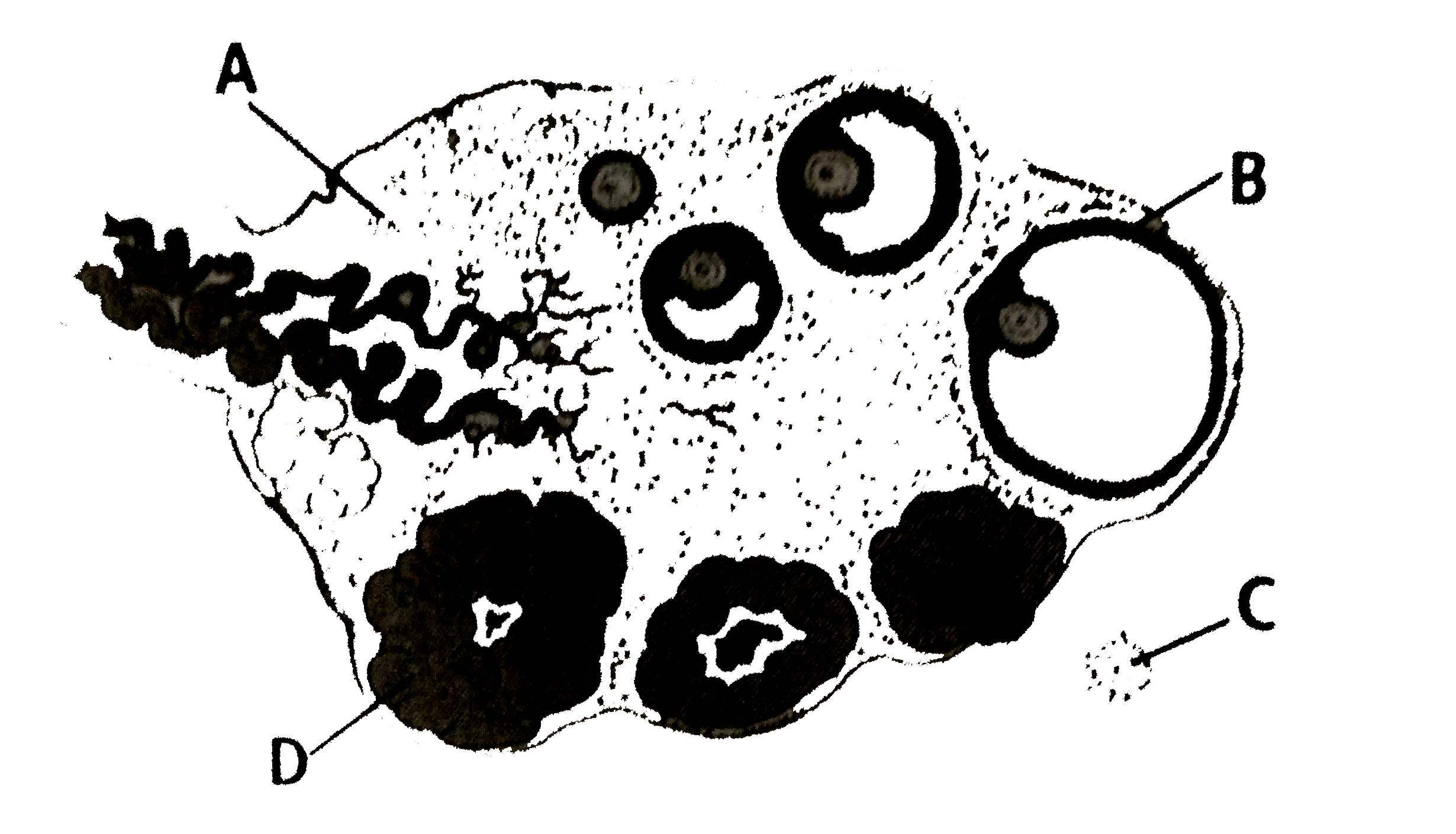Briefly describe changes in the human ovary taking place under the influence of FSH.
Step-by-Step Solution:
1. Understanding the Source of FSH:
- Follicle Stimulating Hormone (FSH) is released from the anterior pituitary gland. The release of FSH is regulated by the Gonadotropin-Releasing Hormone (GnRH) from the hypothalamus.
2. Action of FSH on the Ovary:
- Once released, FSH travels through the bloodstream to the ovaries, where it exerts its effects on the ovarian follicles.
3. Stimulation of Follicles:
- FSH stimulates the growth and maturation of ovarian follicles. Each follicle contains a primary oocyte surrounded by granulosa cells and theca cells.
4. Prevention of Follicular Atresia:
- FSH prevents the degeneration (atresia) of the follicles, allowing them to grow and develop further.
5. Hormonal Release from Follicles:
- As the follicles develop under the influence of FSH, they begin to secrete hormones, primarily estrogen and inhibin.
- Estrogen is crucial for the regulation of the menstrual cycle and the development of secondary sexual characteristics.
6. Negative Feedback Mechanism:
- Inhibin, released by the growing follicles, provides negative feedback to the anterior pituitary to regulate and decrease the secretion of FSH, maintaining hormonal balance.
7. Importance of FSH:
- Without FSH, the follicles would not grow in size, and the primary oocyte would not undergo further development, which is essential for ovulation and fertility.
- Follicle Stimulating Hormone (FSH) is released from the anterior pituitary gland. The release of FSH is regulated by the Gonadotropin-Releasing Hormone (GnRH) from the hypothalamus.
- Once released, FSH travels through the bloodstream to the ovaries, where it exerts its effects on the ovarian follicles.
- FSH stimulates the growth and maturation of ovarian follicles. Each follicle contains a primary oocyte surrounded by granulosa cells and theca cells.
- FSH prevents the degeneration (atresia) of the follicles, allowing them to grow and develop further.
- As the follicles develop under the influence of FSH, they begin to secrete hormones, primarily estrogen and inhibin.
- Estrogen is crucial for the regulation of the menstrual cycle and the development of secondary sexual characteristics.
- Inhibin, released by the growing follicles, provides negative feedback to the anterior pituitary to regulate and decrease the secretion of FSH, maintaining hormonal balance.
- Without FSH, the follicles would not grow in size, and the primary oocyte would not undergo further development, which is essential for ovulation and fertility.
Topper's Solved these Questions
- HUMAN REPRODUCTIONBOOK - ICSECHAPTER - HUMAN REPRODUCTIONEXERCISE - PRACTICE QUESTIONS (LONG ANSWER TYPE QUESTIONS)
9 Videos
- HUMAN REPRODUCTIONBOOK - ICSECHAPTER - HUMAN REPRODUCTIONEXERCISE - PREVIOUS YEARS. BOARD PAPER QUESTIONS (VERY SHORT ANSWER TYPE QUESTIONS)
9 Videos
- HUMAN REPRODUCTIONBOOK - ICSECHAPTER - HUMAN REPRODUCTIONEXERCISE - PRACTICE QUESTIONS (SHORT ANSWER TYPE-I QUESTIONS)
17 Videos
- HUMAN HEALTH AND DISEASE BOOK - ICSECHAPTER - HUMAN HEALTH AND DISEASE EXERCISE - COMPETITION CORNER (OBJECTIVE TYPE QUESTIONS) (Assertion and Reason Type Questions (For AIIMS aspirants))
28 Videos
- ISC BOARD PAPER (2019 -BIOLOGY)BOOK - ICSECHAPTER - ISC BOARD PAPER (2019 -BIOLOGY)EXERCISE - PART-II ( SECTION-C)
12 Videos
Similar Questions
Humans semen is liquid at ejaculation but it soon coagulates and then undergo secondary liquefaction under the influence of ..... Secretion released by ..... gland.
View SolutionExchange of calcium between bone and extracellular fluid takes place under the influence of certain hormones
(a) What will happen if more of Ca2+ is in extracellular fluid?
(b) What will happen if very less amount of Ca2+ is in the extracellular fluid?
View Solution
Knowledge Check
Periodic changes are the ones which take place
Avery slowlyBvery fastCsuddenlyDafter fixed interval of timeThe given figure illustrates montly changes in the human ovary during the reproduction cycle.

Which of the following statements most accurately describes each structure?ABefore puberty, the oocyte (A) does not start the process of meiosis.BThe hormone produced by by structure (B) causes thinning of the uterine cervical mucus to allow passage of sperms.CDuring ovulation, structure (C) stays at the interphase between meiosis I and meiosis II.DThe hormone produced by structure (D) stimulates the pituitary gland to secrete luteinising hormone.
A current carrying ring is placed in a horizontal plane. A charged particle is dropped along the axis of the ring to fall under the influence of gravity
View SolutionDifferentiate between major structural changes in the human ovary during the follicular and luteal phase of the menstrual cycle.
View SolutionDifferentiate between major structural changes in the human ovary during the follicular and luteal phase of the menstrual cycle.
View SolutionBriefly describe how the following actions take place :
The oval window of the inner ear vibrates.
View SolutionBriefly describe the structure of the cerebellum in human brain and mention its functions.
View SolutionMore concentration of auxin in horizontally placed plants, under the influence of gravity, occurs in
View Solution
